Search Results
Fine Jewelry University Articles matching: “Re make verses repair”
Showing only FJU Article results. Click here to show all results.
Fine Jewelry University (Show All FJU Articles)
-
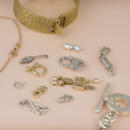
Types of Jewelry Clasps
… with a small push button) to allow it to slide back out of the box. For most of our bracelets that we custom make, this is our clasp of choice. When paired with figure eight safety clasps and a safety chain it is one of the most secure … – The basic design of the box clasp can be made in a dizzying variety of styles. Designers can get creative and make the clasp an integrated part of the piece. Ease of Use – This style is much easier than some of others to fasten with …
-

How Are Lab Grown Diamonds Made?
… with High Pressure/High Temperature (HPHT) manufacturing. There are three basic manufacturing processes used to make HPHT diamonds: the belt press, the cubic press, and the split-sphere (BARS) press. The goal of each process is to create… industrial applications where the amazing properties of diamonds (hardness, thermal conductivity, etc.) are used to make better tools and equipment. Since the initial success with the belt press, HPHT technology has been constantly …
-

How to Tell If a Diamond Is Natural or Lab Grown
… IIa diamond. Type IIa is actually a gemological variant of the diamond that relates to how pure the carbon is that makes up the diamond. In nature, less than 2% of all diamonds are Type IIa, however, most gem quality lab grown diamonds … to humans) and analyze what the stone outputs. There are certain, tell-tale signs of the various processes used to make lab grown diamonds that show up as spikes and troughs at specific wavelengths in the spectroscopic analysis. With CVD…
-
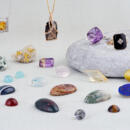
Gem in the Spotlight: Quartz
… list, we need to touch on the most dangerous part of the quartz story: the naming of names. No matter how long we make this list, there’s sure to be some varieties missing. Then, there’s the whole thorny issue of misnomers–misleading … durability with a Mohs hardness rating of 7 (harder than opal and peridot but softer than topaz or sapphire). This makes it a fairly hard gemstone that is resistant to scratching and chipping. It is also resistant to heat and chemicals, …
-
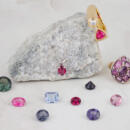
Gem in the Spotlight: Spinel
… applications in high-energy lasers, transparent armor, and missile guidance systems. It even has the potential to make its way onto our smartphones as a super durable, glass-like covering. History and Lore of Spinel Spinel is arguably …Spinel, the Great Imposter” sounds like the title of an action movie, but it could also be the title of this article. For years …as a substitute for similar looking stones. In recent years, spinel has started to move out of the shadows and be appreciated in its own right, and we can see why. Its colors rival even the best rubies, sapphires, tourmalines, and other…
-
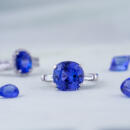
Gem in the Spotlight: Tanzanite
…. Tanzanite has them both. In fact, it is estimated that Tanzanite is 1,000 times rarer than diamond. But, what makes Tanzanite so popular is its color. Tanzanite’s gorgeous color is a captivating mix of blue and purple. The deep hues of …. Tanzanite in its raw form has three colors: blue, purple, and green. Heating removes the green component which makes the violetish blue color pop (although technically speaking it doesn’t make it more blue, just less green). The amount …
-
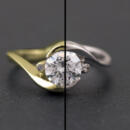
Star White Gold
… and rhodium shares many of the properties of platinum including its white color. The rhodium plating is used to make the white gold look whiter. The natural color of the white gold could actually be a light yellow color. The rhodium is … required.” With Star White gold, the bright white color you see is the color you get. The rich reflective surface makes for a gorgeous piece of jewelry, and the clean white gold shows off diamonds to their fullest brilliance. Pure Star …
-
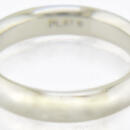
Platinum
… precious gemstones. Platinum jewelry does not fade or tarnish and keeps its looks for a lifetime. Platinum’s purity makes it hypoallergenic and ideal for those with sensitive skin. All the platinum ever mined would fit in the average … and credit cards. Platinum jewelry is the perfect choice for a lifetime of everyday wear. Its density and weight make it a durable jewelry metal. Platinum does not wear away and holds precious stones firmly and securely. Like all …
-
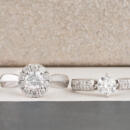
Anatomy of a Ring
Knowing the different parts of a ring can help you make a better decision when choosing a new ring and it can help you know when your ring may need maintenance. It’s also a… terms. Shank Every ring has a shank. This is the technical term for the band of metal that encircles the finger. There would be no ring without the shank. If the ring has a distinct design feature on the top part, the ring shank is … eye. Over time, the shank can wear thin—yes, even gold and platinum can wear away. In such cases a jeweler can “re-shank” the ring by replacing the metal at the bottom of the shank, going as far up the sides as the design and the …